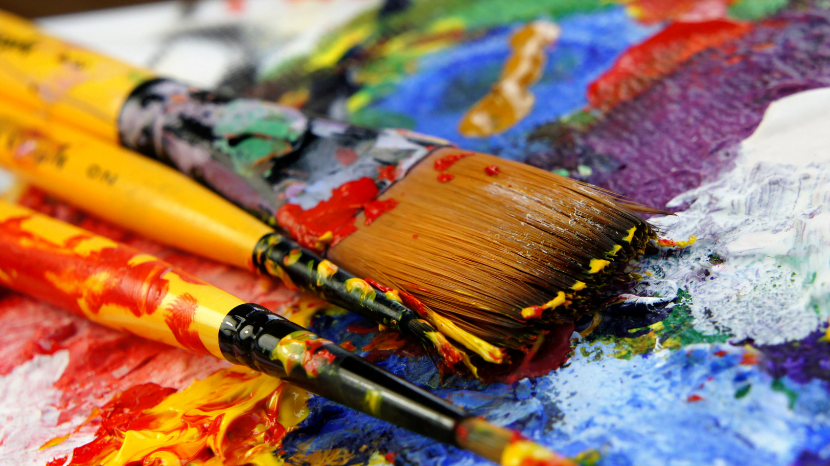100 Facts About Art & Design
100 Facts About Art & Design: A captivating journey through history, techniques, and innovations that have shaped this vibrant field. Dive in to explore a universe where creativity knows no bounds.”
Fact 1: The Birth of Impressionism
Impressionism, a revolutionary art movement that began in the late 19th century, was characterized by artists’ attempt to capture light, atmosphere, and immediacy. Artists like Claude Monet and Pierre-Auguste Renoir were pioneers in this movement, painting scenes with loose brushwork and vibrant colors to capture fleeting moments in time.
Fact 2: The Golden Ratio in Design
The Golden Ratio, approximately equal to 1.618, has been used in art and design for centuries. This mathematical ratio is believed to create aesthetically pleasing compositions, and can be found in various works of art, architecture, and even in nature, showcasing the harmonious balance between elements.
Fact 3: The Evolution of Typography
Typography, the art of arranging type, has evolved significantly over the years. From the invention of movable type by Johannes Gutenberg in the 15th century to the development of digital fonts in the modern era, typography plays a crucial role in conveying messages effectively and aesthetically in various mediums, including books, advertisements, and websites.
Fact 4: The Renaissance and Humanism
The Renaissance, a period spanning the 14th to the 17th century, witnessed a renewed interest in humanism, science, and the arts. Artists like Leonardo da Vinci and Michelangelo emerged during this time, creating masterpieces that celebrated human form and nature, marking a shift from the religious themes prevalent in the Middle Ages.
Fact 5: The Impact of Surrealism
Surrealism, an artistic movement that emerged in the early 20th century, sought to bridge the gap between the conscious and the unconscious mind. Artists like Salvador Dalí and René Magritte created dream-like, bizarre artworks that challenged the boundaries of reality, encouraging viewers to delve into the depths of their imagination.
Fact 6: The Rise of Digital Art
Digital art, a modern art form that utilizes digital technology as an essential part of the creative process, has opened up new horizons in the art world. Artists can now experiment with various software and hardware tools, creating artworks that can be manipulated and transformed in ways that were not possible with traditional mediums.
Fact 7: The Influence of Art Deco
Art Deco, a visual arts style that emerged in the 1920s, is characterized by its use of geometric shapes, bold colors, and lavish ornamentation. This style influenced various fields, including architecture, fashion, and graphic design, representing luxury, glamour, and technological progress of that era.
Fact 8: The Concept of Negative Space in Design
Negative space, also known as white space, refers to the empty areas in a composition. In design, the effective use of negative space can enhance readability, create balance, and highlight important elements, showcasing the power of simplicity and minimalism.
Fact 9: The Pop Art Movement
The Pop Art movement, which emerged in the 1950s, sought to challenge the traditions of fine art by incorporating imagery from popular culture, such as advertisements, comic books, and mundane objects. Artists like Andy Warhol and Roy Lichtenstein were known for their vibrant, bold artworks that blurred the lines between high art and popular culture.
Fact 10: The Role of Color Psychology in Design
Color psychology is the study of how colors can influence human behavior and emotions. In design, understanding the psychological effects of colors can help in creating effective and impactful compositions. For instance, red is often associated with passion and urgency, while blue evokes a sense of calm and trust.
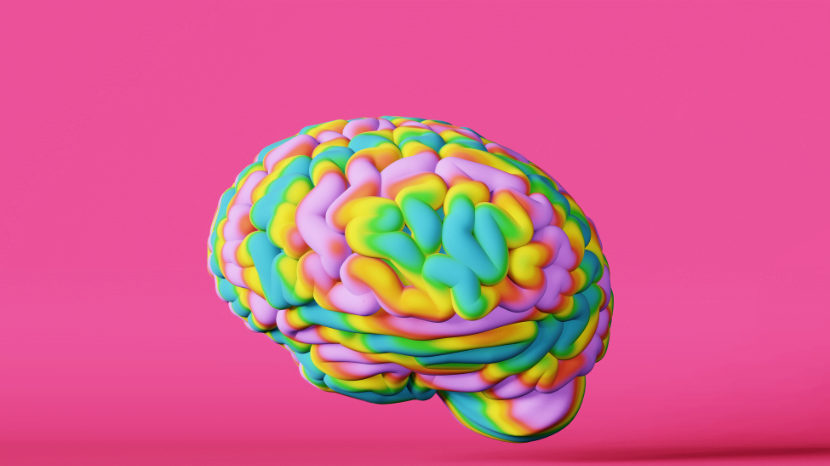
Fact 11: The Development of Abstract Art
Abstract art, a movement that gained prominence in the early 20th century, is characterized by artworks that do not attempt to represent reality accurately. Instead, artists like Wassily Kandinsky and Piet Mondrian used shapes, colors, and forms to express their emotions and ideas, encouraging viewers to interpret the artworks in their own way.
Fact 12: The Importance of Symmetry in Design
Symmetry, a balanced arrangement of elements, is a fundamental principle in design. Symmetrical designs are often perceived as harmonious and aesthetically pleasing, creating a sense of order and stability in compositions.
Fact 13: The Innovations in 3D Printing in Art
3D printing, a technology that allows for the creation of three-dimensional objects from digital models, has found applications in the art world. Artists can now create complex, intricate sculptures and installations using 3D printing technology, pushing the boundaries of what is possible in the realm of art.
Fact 14: The Influence of Cubism
Cubism, an avant-garde art movement that emerged in the early 20th century, was characterized by the fragmentation and abstraction of objects into geometric shapes. Artists like Pablo Picasso and Georges Braque were pioneers in this movement, creating artworks that challenged traditional perspectives and representations in art.
Fact 15: The Role of Storytelling in Design
Storytelling is a powerful tool in design, helping to convey messages and evoke emotions effectively. Through the use of visuals, narratives, and interactive elements, designers can create immersive experiences that engage audiences and leave a lasting impact.
Fact 16: The Emergence of Street Art
Street art, a form of visual art created in public locations, has gained recognition and popularity over the years. Artists like Banksy have used street art as a medium to convey social and political messages, transforming urban spaces into open-air galleries that provoke thought and discussion.
Fact 17: The Impact of Minimalism in Design
Minimalism, a design style characterized by simplicity and functionality, has influenced various fields, including art, architecture, and graphic design. Minimalist designs often feature a limited color palette, clean lines, and ample white space, showcasing the beauty of simplicity and the principle of “less is more”.
Fact 18: The Evolution of Photography
Photography, the art of capturing light to create images, has evolved significantly since its invention in the 19th century. From black-and-white photographs to digital photography, this medium has transformed the way we document and perceive the world, offering a window into moments frozen in time.
Fact 19: The Growth of Interactive Art
Interactive art, a genre of art that involves the participation of the audience, has gained prominence in the digital age. Through the use of technology, artists can create immersive installations that respond to the viewers’ actions, creating a dynamic and participatory art experience.
Fact 20: The Advent of Sustainable Design
Sustainable design refers to the practice of creating products and solutions that minimize negative environmental impacts. This approach considers the entire lifecycle of a product, from material selection to disposal, promoting eco-friendly practices and fostering a harmonious relationship between design and the environment.
Fact 21: The Phenomenon of Optical Art
Optical Art, or Op Art, is a style that plays with visual perception, creating illusions of movement and depth through the use of patterns and contrasting colors. Artists like Bridget Riley and Victor Vasarely were known for their mesmerizing artworks that engage and captivate the viewers’ eyes.
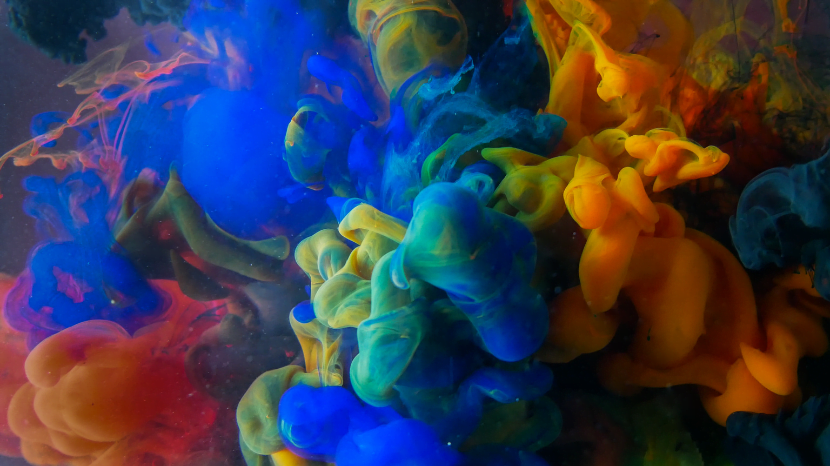
Fact 22: The Use of Mood Boards in Design
Mood boards are a tool used in the design process to visualize ideas and concepts. By compiling images, textures, colors, and other visual elements onto a board, designers can create a cohesive visual guide that helps in shaping the direction and aesthetics of a project.
Fact 23: The Art of Calligraphy
Calligraphy, the art of beautiful handwriting, has been practiced for centuries across various cultures. This art form is characterized by the use of fluid strokes and elegant letterforms, adding a personal touch to invitations, certificates, and other written materials.
Fact 24: The Bauhaus Movement
The Bauhaus movement, which originated in Germany in the early 20th century, aimed to bridge the gap between art and industry. This movement emphasized functionality and simplicity, influencing modern design with its approach to combining fine art, craftsmanship, and technology.
Fact 25: The World of Anime and Manga
Anime and Manga, distinct forms of art originating from Japan, have gained global popularity. Anime refers to animated TV shows and movies characterized by colorful graphics and fantastical themes, while Manga refers to comic books and graphic novels that offer a wide range of genres and artistic styles.
Fact 26: The Role of Texture in Art and Design
Texture, an element that refers to the surface quality of an artwork or design, plays a crucial role in creating visual interest and depth. Artists and designers use texture to evoke emotions, create contrasts, and add dimension to their creations, enhancing the overall visual experience.
Fact 27: The Emergence of Digital Illustration
Digital illustration, the process of creating artworks using digital tools, has revolutionized the field of illustration. Artists can now experiment with a wide range of brushes, layers, and effects, creating detailed and vibrant illustrations that can be easily edited and shared online.
Fact 28: The Impact of Social Media on Art
Social media platforms have transformed the way art is consumed and shared. Artists can now reach a global audience, showcase their portfolios, and sell their artworks online. Social media has also facilitated the growth of art communities, where artists can connect, collaborate, and learn from each other.
Fact 29: The Concept of Universal Design
Universal Design refers to the creation of products and environments that are accessible to all people, regardless of age, disability, or other factors. This design approach emphasizes inclusivity, ensuring that designs cater to the diverse needs and abilities of the population.
Fact 30: The Art of Paper Cutting
Paper cutting, an art form that involves cutting intricate designs onto paper, has been practiced in various cultures around the world. This art form requires precision and skill, resulting in delicate artworks that showcase the beauty of negative space and silhouette.

Fact 31: The Influence of Dadaism
Dadaism, an avant-garde movement that emerged during World War I, rejected the norms of traditional art, embracing chaos and irrationality. Artists associated with this movement created artworks that were often absurd, satirical, and nonsensical, challenging the conventional notions of art and society.
Fact 32: The Importance of Branding in Design
Branding, a crucial aspect of design, involves creating a unique identity for a product or company through the use of logos, color schemes, typography, and other visual elements. Effective branding helps in building recognition, trust, and loyalty among consumers, contributing to the success of a business.
Fact 33: The World of Performance Art
Performance art, a medium where the artwork is the artist’s action, emerged in the 20th century as a way to bring art closer to life. This art form can encompass various elements, including body art, live painting, and theatrical performances, often blurring the boundaries between art and life.
Fact 34: The Use of Geometric Shapes in Design
Geometric shapes, such as circles, squares, and triangles, are fundamental elements in design. These shapes can be used to create balance, harmony, and contrast in compositions, offering a visual language that communicates ideas effectively and aesthetically.
Fact 35: The Art of Glass Blowing
Glass blowing, a technique that involves shaping molten glass into artworks, has been practiced since ancient times. This art form requires skill and precision, resulting in beautiful glass objects that range from functional items to intricate sculptures.
Fact 36: The Rise of Art Therapy
Art therapy is a therapeutic practice that uses art-making as a form of expression and healing. Through the process of creating art, individuals can explore their emotions, reduce stress, and improve their mental well-being, showcasing the transformative power of art.
Fact 37: The Evolution of Fashion Design
Fashion design, the art of creating clothing and accessories, has evolved over the centuries, reflecting the cultural, social, and economic changes of each era. From the elaborate garments of the Renaissance to the minimalist trends of the modern age, fashion design continues to be a dynamic and influential field.
Fact 38: The Concept of Biomimicry in Design
Biomimicry, the practice of drawing inspiration from nature to solve design problems, has led to the creation of innovative and sustainable solutions. This approach encourages designers to learn from the efficient structures and systems found in nature, applying these principles to create designs that are harmonious with the environment.
Fact 39: The World of Graffiti Art
Graffiti art, a form of street art that involves creating visual compositions on public surfaces, has gained recognition as a legitimate art form. Graffiti artists use spray paint, markers, and other mediums to create artworks that are often vibrant, expressive, and reflective of urban culture.
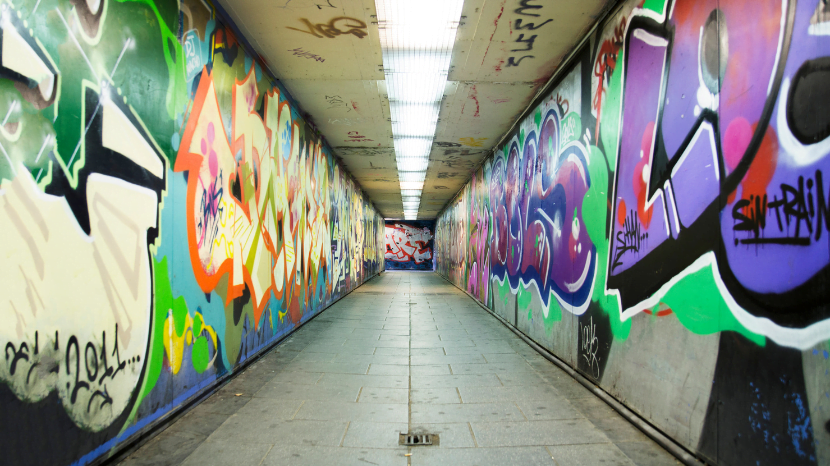
Fact 40: The Role of Storyboarding in Film and Animation
Storyboarding is a technique used in film and animation to visualize scenes through a series of illustrations. This process helps in planning the sequence of events, camera angles, and movements, ensuring a cohesive and engaging narrative.
Fact 41: The Art of Mosaic
Mosaic is an ancient art form that involves creating images or patterns using small pieces of colored glass, stone, or other materials. This intricate art form has adorned the floors, walls, and ceilings of many historical buildings, showcasing detailed narratives and decorative motifs.
Fact 42: The Emergence of Virtual Reality (VR) in Art
Virtual Reality (VR) has opened new avenues in the field of art, allowing artists to create immersive 3D environments and artworks. Viewers can now explore art in a more interactive and engaging way, experiencing art pieces from various angles and perspectives.
Fact 43: The Significance of Scale in Art and Design
The scale, which refers to the size of an object in relation to another, plays a crucial role in art and design. Manipulating scale can create visual interest, emphasize importance, and evoke emotions, offering a powerful tool for artists and designers to convey their messages.
Fact 44: The Art Nouveau Movement
The Art Nouveau movement, which emerged in the late 19th century, is characterized by its use of flowing lines, organic forms, and floral motifs. This artistic movement influenced various fields, including architecture, furniture design, and graphic art, bringing a sense of elegance and harmony to the creations.
Fact 45: The World of Conceptual Art
Conceptual art is a movement where the idea or concept behind the work takes precedence over the physical creation. Artists like Sol LeWitt and Joseph Kosuth were pioneers in this movement, creating artworks that challenged traditional notions of art, focusing on the intellectual engagement of the viewer.
Fact 46: The Importance of Contrast in Design
Contrast, a principle of design, involves the use of opposing elements, such as colors, shapes, or textures, to create visual interest and emphasis. Effective use of contrast can guide the viewer’s attention, highlight important elements, and create a dynamic composition.
Fact 47: The Art of Sculpture
Sculpture, a three-dimensional art form, has been a significant medium of artistic expression throughout history. Sculptors use various materials, including stone, metal, and clay, to create statues and installations that can range from representational to abstract, showcasing the beauty of form and space.
Fact 48: The Impact of Digital Photography on Art
Digital photography has revolutionized the field of photography, offering greater flexibility and creative control to photographers. With the advent of digital cameras, photographers can now experiment with various techniques, such as long exposure and HDR photography, creating artworks that push the boundaries of traditional photography.
Fact 49: The Role of Proportion in Design
Proportion, which refers to the relative size and scale of elements in a design, is a fundamental principle in creating harmonious compositions. Understanding the principles of proportion can help designers create balanced and aesthetically pleasing layouts, enhancing the overall impact of the design.
Fact 50: The World of Contemporary Art
Contemporary art, a term used to describe art produced in the late 20th century and beyond, encompasses a wide range of styles, mediums, and themes. This art form often reflects the complexities of the modern world, offering a platform for artists to explore social, political, and cultural issues through their creations.

Fact 51: The Emergence of Eco-Art
Eco-art is a movement that focuses on the intersection of art and environmental issues. Artists in this movement create artworks that highlight the beauty of nature, raise awareness about environmental concerns, and promote sustainable practices, fostering a deeper connection between humans and the natural world.
Fact 52: The Importance of Balance in Design
Balance, a principle of design, refers to the distribution of visual weight in a composition. Achieving balance, whether symmetrical or asymmetrical, creates a sense of stability and harmony, enhancing the viewer’s experience and engagement with the design.
Fact 53: The Art of Pottery and Ceramics
Pottery and ceramics, art forms that involve shaping clay into objects, have been practiced for thousands of years. This craft requires skill and patience, resulting in functional and decorative items that showcase the beauty of handmade creations.
Fact 54: The Influence of Postmodernism in Art
Postmodernism, a movement that emerged in the mid-20th century, challenged the established norms of art, embracing diversity, complexity, and contradiction. Artists associated with this movement often used irony, parody, and pastiche, creating artworks that questioned the notions of originality and authenticity.
Fact 55: The Role of Hierarchy in Design
Hierarchy, a principle of design, involves organizing elements in a way that indicates their importance. Through the use of size, color, and placement, designers can create a visual hierarchy that guides the viewer’s eye and facilitates effective communication.
Fact 56: The World of Fiber Art
Fiber art, a medium that uses natural or synthetic fibers, encompasses a wide range of techniques, including weaving, knitting, and embroidery. Artists in this field create textured and tactile artworks that explore the possibilities of fabric and thread, offering a unique and versatile medium for artistic expression.
Fact 57: The Rise of Art Installations
Art installations, three-dimensional artworks designed to transform a space, offer immersive experiences that engage the viewers on multiple levels. These installations can incorporate various elements, including sound, light, and video, creating dynamic environments that encourage interaction and reflection.
Fact 58: The Concept of Unity in Design
Unity, a principle of design, refers to the cohesive relationship between elements in a composition. Achieving unity creates a harmonious and visually pleasing design, where all components work together to convey a unified message.
Fact 59: The Art of Printmaking
Printmaking, a process of creating artworks by printing, has been practiced for centuries. This art form includes various techniques, such as etching, lithography, and woodcut, allowing artists to create multiple copies of their artworks, each considered an original piece.
Fact 60: The Impact of Technology on Art Conservation
Technology has played a significant role in art conservation, helping conservators analyze, restore, and preserve artworks with greater precision. Advanced techniques, such as digital imaging and spectroscopy, allow for non-invasive analysis, ensuring the longevity and integrity of precious artworks.

Fact 61: The Art of Fresco Painting
Fresco painting is an ancient technique where pigments are applied to wet plaster. This method, used extensively during the Renaissance, allows the pigments to merge with the plaster, resulting in vibrant and durable artworks that have stood the test of time.
Fact 62: The Rise of Digital Art Galleries
Digital art galleries have emerged as a modern platform where artists can showcase and sell their artworks online. These virtual spaces allow for a wider reach, enabling artists to connect with audiences globally and revolutionizing the traditional gallery model.
Fact 63: The Importance of Negative Space in Design
Negative space, also known as white space, refers to the empty areas in a composition. Utilizing negative space effectively can enhance readability, create balance, and highlight important elements, proving to be a powerful tool in design.
Fact 64: The Impressionist Movement
The Impressionist movement, which emerged in the 19th century, broke away from traditional art norms, focusing on capturing the fleeting effects of light and atmosphere. Artists like Claude Monet and Pierre-Auguste Renoir were known for their loose brushwork and use of vibrant colors, creating paintings that conveyed the sensations of the natural world.
Fact 65: The World of Kinetic Art
Kinetic art, a movement that incorporates movement into artworks, creates dynamic pieces that change and evolve over time. Artists like Alexander Calder and Jean Tinguely were pioneers in this field, creating sculptures that moved with the wind or through mechanical means, offering a mesmerizing and interactive art experience.
Fact 66: The Role of Typography in Design
Typography, the art of arranging type, plays a crucial role in design. The choice of fonts, sizes, and spacing can significantly impact the readability and aesthetics of a design, helping to convey the intended message effectively.
Fact 67: The Art of Tapestry
Tapestry, a form of textile art, involves weaving colored threads to create intricate patterns or pictures. This ancient art form has been used to depict historical events, religious stories, and decorative motifs, showcasing the skill and creativity of the weavers.
Fact 68: The Impact of Augmented Reality (AR) in Art
Augmented Reality (AR) has introduced a new dimension to the art world, allowing artists to create immersive and interactive artworks. Through AR, viewers can experience art in a novel way, overlaying digital elements onto the physical world and offering a blend of reality and imagination.
Fact 69: The Concept of Golden Ratio in Design
The Golden Ratio, a mathematical ratio found in nature, has been used in art and design to create aesthetically pleasing compositions. This ratio, approximately 1.618, can be seen in the proportions of famous artworks and architectural structures, showcasing the harmony and beauty of natural proportions.
Fact 70: The World of Street Art
Street art, a contemporary art form that emerged from graffiti, encompasses various mediums, including murals, stencils, and installations. Street artists often use public spaces as their canvas, creating artworks that are accessible to all and reflect the culture and issues of the urban environment.

Fact 71: The Emergence of Sustainable Design
Sustainable design focuses on creating products and spaces that minimize environmental impact. This approach considers the entire lifecycle of a design, promoting the use of renewable resources, energy efficiency, and waste reduction, contributing to a more sustainable and responsible future.
Fact 72: The Importance of Color Theory in Design
Color theory, a conceptual framework used in visual arts, explores the interactions and relationships between colors. Understanding color theory can help designers create harmonious color schemes, evoke emotions, and enhance the visual impact of their designs.
Fact 73: The Art of Origami
Origami, the Japanese art of paper folding, involves creating three-dimensional objects from a single sheet of paper. This art form requires precision and creativity, resulting in intricate sculptures that showcase the beauty of geometric forms and symmetry.
Fact 74: The Influence of Surrealism in Art
Surrealism, a movement that emerged in the 20th century, sought to bridge the gap between the conscious and unconscious mind. Artists like Salvador Dalí and René Magritte created dreamlike and bizarre artworks that challenged reality, offering a glimpse into the world of imagination and subconscious thoughts.
Fact 75: The Role of Grid Systems in Design
Grid systems, a tool used in graphic design, help in organizing content in a structured and consistent manner. The use of grids facilitates alignment, hierarchy, and readability, creating designs that are both aesthetically pleasing and functional.
Fact 76: The World of Performance Painting
Performance painting involves the act of creating art as a performance, where the process of making art becomes a spectacle. Artists in this field often create artworks in front of an audience, incorporating music, dance, and other elements, offering a dynamic and engaging art experience.
Fact 77: The Rise of Artivism
Artivism, a blend of art and activism, uses artistic expressions to raise awareness and advocate for social, political, and environmental issues. Artists in this movement create artworks that provoke thought, inspire change, and encourage viewers to engage with the pressing issues of our time.
Fact 78: The Concept of Minimalism in Design
Minimalism, a design approach that emphasizes simplicity and functionality, has influenced various fields, including art, architecture, and graphic design. This approach uses a limited color palette, clean lines, and ample white space, creating designs that convey clarity and tranquility.
Fact 79: The Art of Sand Sculpture
Sand sculpture involves creating artworks using sand and water. This temporary art form is often seen on beaches and sand festivals, where artists create large and detailed sculptures that showcase their skill and creativity, albeit for a fleeting moment before being reclaimed by nature.
Fact 80: The Impact of Social Media on Art Sales
Social media has transformed the art market, offering a platform for artists to sell their artworks directly to collectors. Through social media, artists can build a following, engage with their audience, and showcase their portfolio, opening up new opportunities and democratizing the art world.

Fact 81: The Renaissance Period
The Renaissance, a period spanning from the 14th to the 17th century, marked a resurgence of interest in art, literature, and science. Artists like Leonardo da Vinci and Michelangelo emerged during this time, creating masterpieces that showcased a deep understanding of the human form and the natural world.
Fact 82: The Role of Digital Illustration in Modern Art
Digital illustration has become a prominent medium in the art world, allowing artists to create intricate artworks using digital tools. This medium offers versatility and precision, enabling artists to experiment with styles and techniques that were not possible with traditional mediums.
Fact 83: The Importance of Line in Design
Line, a fundamental element in design, can be used to create shapes, patterns, and textures. The use of lines can guide the viewer’s eye, create emphasis, and establish a visual hierarchy, proving to be a versatile tool in the hands of artists and designers.
Fact 84: The Cubist Movement
The Cubist movement, pioneered by artists like Pablo Picasso and Georges Braque, broke away from traditional perspectives, presenting objects from multiple angles in a fragmented and abstract manner. This innovative approach to art challenged viewers to perceive reality in a new way, paving the way for modern art.
Fact 85: The World of Digital Sculpture
Digital sculpture, a modern form of sculpture, involves creating three-dimensional objects using digital tools. Artists can manipulate shapes and forms in a virtual environment, experimenting with textures, lights, and materials to create realistic and abstract sculptures.
Fact 86: The Role of Texture in Design
Texture, an element that refers to the surface quality of a design, can add depth and dimension to artworks. Whether tactile or visual, the use of texture can create contrast, evoke emotions, and enhance the overall aesthetic of a design.
Fact 87: The Art of Calligraphy
Calligraphy, the art of beautiful handwriting, has been practiced for centuries across various cultures. This art form combines visual art and language, creating decorative letters and symbols that convey elegance and craftsmanship.
Fact 88: The Impact of Artificial Intelligence (AI) in Art
Artificial Intelligence (AI) has introduced a new frontier in the art world, with algorithms capable of creating artworks that mimic the style of famous artists. This technological advancement has sparked debates about creativity and originality, challenging the traditional boundaries of art.
Fact 89: The Principle of Repetition in Design
Repetition, a principle of design, involves the repeated use of elements to create patterns or rhythms. This technique can create visual consistency, establish a brand identity, and enhance the cohesiveness of a design.
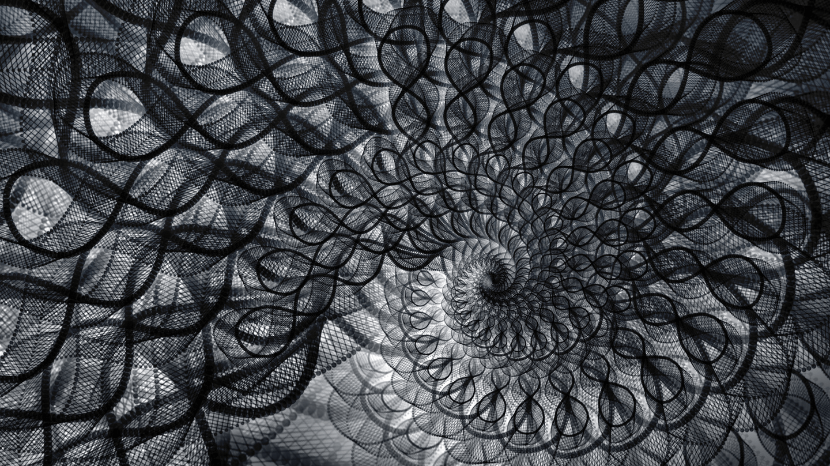
Fact 90: The World of Outsider Art
Outsider art, also known as Art Brut, refers to artworks created by individuals outside the mainstream art world, often with no formal training. These artists create raw and unfiltered expressions, offering a unique perspective that challenges the established norms of art.
Fact 91: The Emergence of Bio-Art
Bio-art is a contemporary art form that uses living organisms, such as bacteria and plants, as a medium. Artists in this field explore the relationship between art and biology, creating artworks that raise ethical and philosophical questions about the nature of life and art.
Fact 92: The Importance of Symmetry in Design
Symmetry, a principle that involves creating balanced compositions, can evoke a sense of harmony and stability in designs. Whether radial or bilateral, the use of symmetry can create aesthetically pleasing compositions that resonate with viewers.
Fact 93: The Art of Glass Blowing
Glass blowing, a technique that involves shaping molten glass using a blowpipe, has been practiced for centuries. This art form requires skill and precision, resulting in delicate and intricate glass artworks that showcase the beauty of transparency and light.
Fact 94: The Influence of Dadaism in Art
Dadaism, a movement that emerged during World War I, rejected logic and reason, embracing absurdity and randomness. Artists associated with this movement created artworks that challenged traditional aesthetics, using collage, photomontage, and found objects to create provocative and unconventional pieces.
Fact 95: The Role of Alignment in Design
Alignment, a principle of design, refers to the arrangement of elements in a composition. Proper alignment can create a clean and organized layout, guiding the viewer’s eye and facilitating a smooth visual flow.
Fact 96: The World of Land Art
Land art, a movement that emerged in the 1960s, involves creating artworks directly in the natural environment. Artists like Richard Long and Robert Smithson created large-scale installations using natural materials, such as rocks and soil, blending art and landscape in a harmonious and transient manner.
Fact 97: The Rise of Interactive Art
Interactive art, a contemporary art form, encourages viewer participation, creating a dynamic relationship between the artwork and the audience. These artworks often incorporate technology, allowing viewers to influence the outcome and experience of the art, fostering a sense of engagement and collaboration.
Fact 98: The Concept of Proximity in Design
Proximity, a principle of design, involves grouping related elements together to create a sense of unity and organization. Utilizing proximity can help designers create clear and coherent layouts, enhancing the viewer’s ability to process information effectively.
Fact 99: The Art of Papercutting
Papercutting, an art form that involves creating designs by cutting paper, has been practiced in various cultures around the world. This delicate art form requires precision and patience, resulting in intricate artworks that showcase the beauty of negative space and silhouette.
Fact 100: The Impact of Social Media on Art Promotion
Social media has become a powerful tool for artists to promote their works and build a community of followers. Platforms like Instagram and Facebook allow artists to share their creations, connect with fans, and gain exposure, democratizing the art world and fostering a new generation of digital artists.
Conclusion
In the ever-evolving world of Art & Design, we find a rich tapestry of creativity, innovation, and expression. From the time-honored traditions of fresco painting and calligraphy to the modern advancements in digital art and interactive installations, the realm of artistry continually expands, offering fresh perspectives and avenues for exploration. As we stand at the intersection of art and technology, we witness a dynamic synergy that promises to propel this field into uncharted territories, fostering a future where art transcends boundaries and enriches the human experience. Let us continue to celebrate the wonders of Art & Design, a domain where imagination meets craftsmanship, and where the spirit of innovation thrives.

